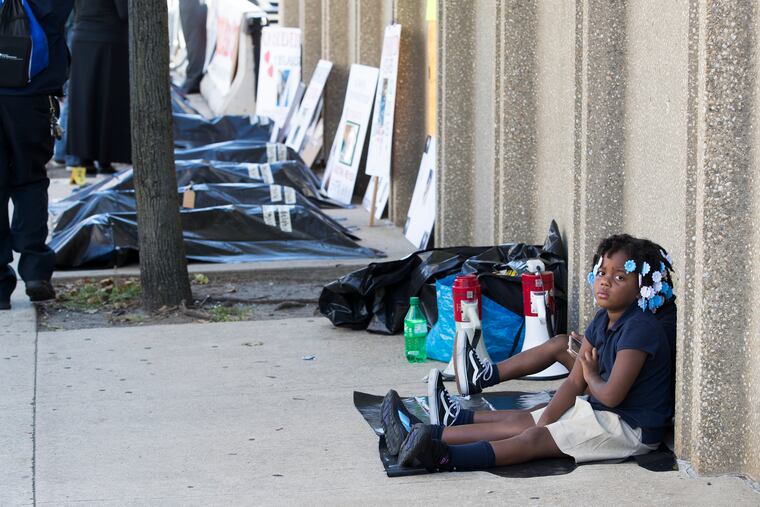Philadelphia is a city in trauma. Now what are we going to do about it? | Helen Ubiñas
Behind every Philadelphia shooting is a city in trauma.

We talk a lot about trauma in Philadelphia. Never enough, though, or in a way that meaningfully addresses the daily terror.
Not because we don’t have ample examples — man, do we have examples: the constant shootings, the staggering loss of life, the neglect of citizens, certain ones anyway, in a city where so far this year 275 people have been murdered.
Trauma is just cooked into our fabric.
But if you needed a raw refresher of what trauma looks and sounds like, it was right there in my colleague Vinny Vella’s story about a father whose every word threatened to suffocate him with the strain and stress and fear of almost losing his son.
And how could it have been any different? On Sunday, just hours before he relived this nightmare, James Hines had driven his 20-year-old son and 22-year-old nephew to the hospital after they were shot during one of the city’s latest mass shootings. Hines’ son and nephew were among five men and a 14-year-old who were victims of what police believe was a drive-by at Eighth and Clearfield Streets. The day before, four other people were shot, one fatally, just four blocks away.
That Hines was able to put two words together speaks to his deep well of strength. Note that I’m calling it strength, not resilience, because the word is often hijacked to downplay trauma, to recuse us all from the parts we play in expecting too much from some people and not enough from others — usually the ones paid or elected to do more.
So much of what Hines recalled broke my heart. But what I haven’t been able to shake was him saying that he was done fighting.
“I want to move when the time comes and never look back, and it’s a shame,” Hines, 37, told my colleague. “I used to have tunnel vision, but after what I saw yesterday, I can’t ignore it anymore.”
No surprise that he had tried to do what so many in the city do: Put on blinders, hope and pray that if they see no evil, and hear no evil, evil will somehow spare them. It helps them cope.
But a bullet will pierce even the best façade of security – exposing grim truths. Among them: Change that sticks will come from those living this reality, not those making a living from it.
In case you missed it, the city’s Office of Violence Prevention made another hire recently, a communications manager.
When I noticed the position on LinkedIn in August, I asked a city spokesperson about the wisdom of hiring another person in an office whose payroll so far is a lot more impressive than its results.
I was told the position, which was posted at $65,000, was more about community outreach than communications, “an integral part of violence reduction efforts.”
Here’s a free piece of advice about what’s really integral to violence reduction: being honest about the effectiveness (or ineffectiveness) of the millions the city spends on antiviolence programs. Imagine if we didn’t just use the right language — mass shootings — but responded as if any shooting, no matter the neighborhood, meant something? Imagine if we did what California’s first surgeon general plans to do and screened children for trauma before they enter the school system, and had personnel trained to interact with them.
Imagine if we were as honest as Karen Leake, the great-aunt of the 14-year-old who was shot alongside Hines’ son and nephew.
“He wants to live a fast life; he told me he could make millions on the corner,” Leake said. “I didn’t want this to be his wake-up call, but maybe this is what it needs to be.”
I wonder how many dead bodies it will take for Philly to have its wake-up call?
Bilal Qayyum, a longtime antiviolence activist, asked me to help him get in touch with Hines. He wanted to reach out, father to father. As unfair as it is, I also hope he begs Hines to keep fighting, because as we see every day, no one is immune – if it’s not your child, it’s someone else’s.
Giving up is just not an option.